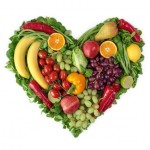There’s no denying it: Piles of heirloom pumpkins are steadily replacing stone fruit pyramids at fall farmers’ markets. It’s time to switch out the fruits and vegetables we relied on during the hotter months with new seasonal selections. Now the search is on for immunity-boosting produce that can match, pound for pound, summer’s antioxidant-rich asparagus, tomatoes, or berries in health benefits.
As the days cool down, culinary nutritionist and chef Mikaela Reuben has begun to steer clients like Owen Wilson and Ben Stiller away from warm-weather fruits designed to hydrate (watermelon) to colorful, root vegetables rich in flavor and vitamin C (butternut squash). Here, Reuben shares the six seasonal staples that should be in every market basket this fall.
Pumpkins
You’re already throwing a carving party, but don’t forget to bake some of the sugar and Cinderella varieties you haul home from the pumpkin patch. The orange flesh is packed with beta-carotene and immune system–boosting vitamins A and C, just like summer peaches. Scoop them out to create an antioxidant-rich puree that can be added to pancakes and smoothies. And when temperatures finally drop, add ginger, curry, and carrots for a warming soup.
Winter Squash
Rest assured, the zucchini-noodle craze of summer will continue into fall with winter squash twisting through the spiralizer. Not only are butternut, acorn, and spaghetti varieties packed with antioxidants, they’re also a source of healthy starch that can regulate energy levels by controlling blood sugar and insulin. Winter squash contains anti-inflammatory omega-3s and can be eaten like pasta, baked into bread (with almond meal and flax), or roasted with sea salt and olive oil.
Apples
Like the strawberries of summer, fall apples contain free radical–fighting antioxidants, lots of vitamin C, and heart-healthy fiber. Reuben says apples can be added to almost anything. They can sweeten smoothies during winter months when tropical fruits aren’t around, add moisture to fall muffins, and even be baked into crispy chips.
Brussels Sprouts
Fresh, leafy greens packed with folate, iron, and calcium are challenging to find after the first frost. But Brussels sprouts, with surprisingly high protein levels, are usually abundant at farmers’ markets, even when spinach and lettuces are sparse. Reuben says nutty-flavored vegetables detoxify and keep digestive systems healthy during winter months. Roasted Brussels sprouts with bacon are a gastropub staple, but vegetarians can swap in pesto for a similarly hearty snack.
Purple Cabbage
Like blueberries and red peppers, the saturated color of purple cabbage indicates similarly high levels of antioxidants that reduce inflammation and prevent diseases. Cabbage can be chopped or shaved in salads, added to stir-fries for extra crunch, and Reuben suggests using one cabbage leaf as a taco shell.
Cauliflower
Reuben calls this phytonutrient-packed vegetable the newest superfood. Like the asparagus you grilled this summer, cauliflower is high in vitamins K and B, folate, and other minerals, plus it promotes healthy bacteria in the digestive system. Chefs are grating and serving cauliflower as a Paleo-friendly replacement for mashed potatoes or rice. The florets can even be cooked with flax to make pizza crusts. The versatile veggie may be the easiest ingredient to add to your culinary repertoire this fall.


